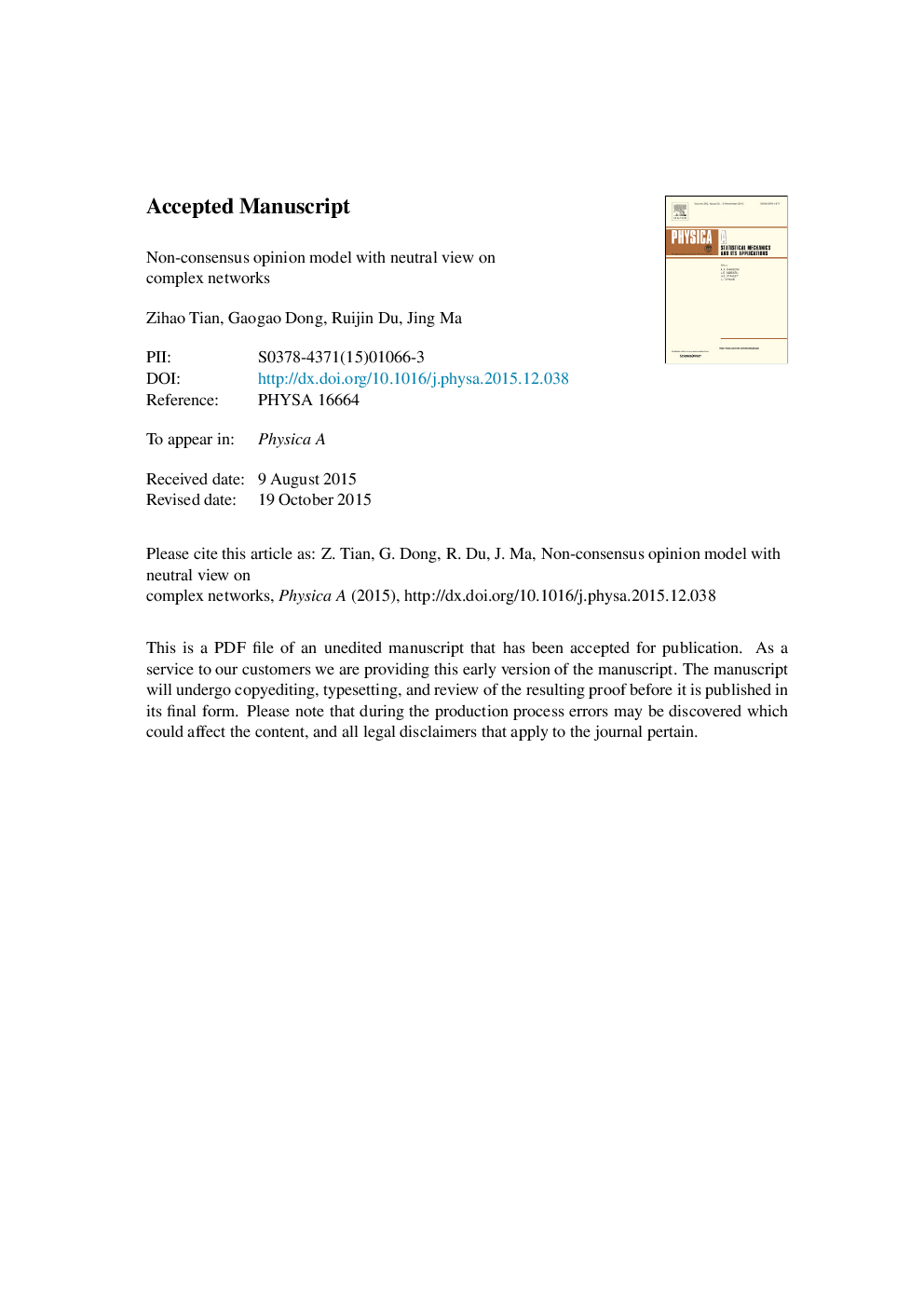| Article ID | Journal | Published Year | Pages | File Type |
|---|---|---|---|---|
| 7378306 | Physica A: Statistical Mechanics and its Applications | 2016 | 12 Pages |
Abstract
A nonconsensus opinion (NCO) model was introduced recently, which allows the stable coexistence of minority and majority opinions. However, due âto disparities in the knowledge, experiences, and personality or self-protection of agents, they often remain âneutral when faced with some opinions in real scenarios. âTo address this issue, we propose a general non-consensus opinion model with neutral view (NCON) âand we define the dynamic opinion âchange process. We applied the NCON model to different topological networks and studied the formation of opinion clusters. In the case of random graphs, random regular networks, and scale-free (SF) networks, we found that the system moved from a continuous phase transition to a discontinuous phase transition as the connectivity density and exponent of the SF network λ âdecreased and increased in the steady state, respectively. Moreover, the initial proportions of neutral opinions were found to have little effect on the proportional structure of opinions at the steady state. These results suggest that the majority choice between positive and negative opinions depends on the initial proportion of each opinion. The NCON model may have potential applications for decision makers.
Keywords
Related Topics
Physical Sciences and Engineering
Mathematics
Mathematical Physics
Authors
Zihao Tian, Gaogao Dong, Ruijin Du, Jing Ma,
